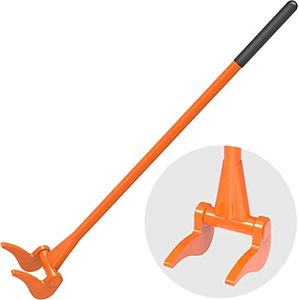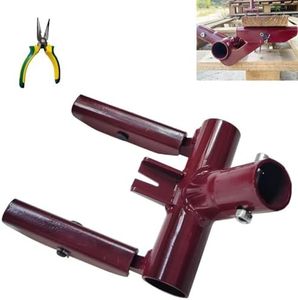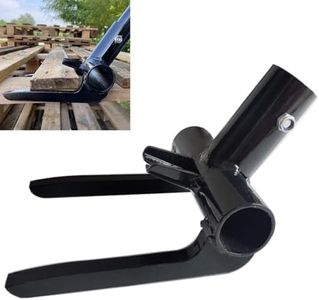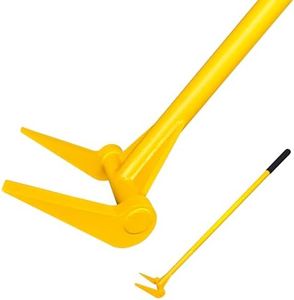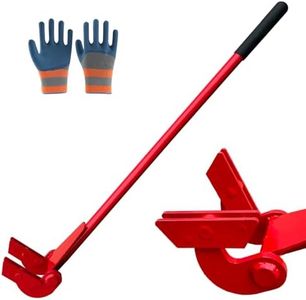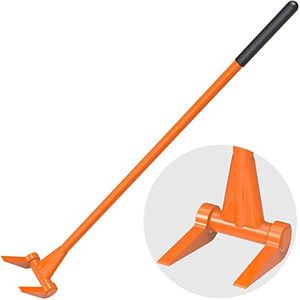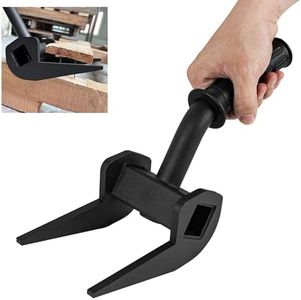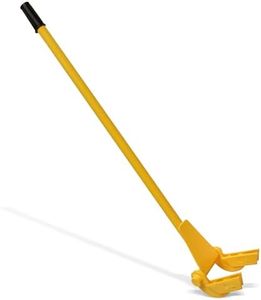We Use CookiesWe use cookies to enhance the security, performance,
functionality and for analytical and promotional activities. By continuing to browse this site you
are agreeing to our privacy policy
10 Best Pallet Busters
From leading brands and best sellers available on the web.Buying Guide for the Best Pallet Busters
When choosing a pallet buster, it's important to focus on what tasks you'll be using it for, how frequently you'll use it, and how comfortable you want the process of dismantling pallets to be. The right tool can make removing boards much easier, faster, and safer. Before buying, consider the general design, size, and any features that could make your work easier. The goal is to find a pallet buster that best matches your strength, the typical pallet sizes and types you encounter, and your preferences for handling and storage.Head DesignThe head design refers to the shape and structure at the working end of the pallet buster that actually lifts or pries the boards. This is important because different head shapes are better at grabbing boards, reaching nail locations, or fitting in tight spaces. Some heads are fixed, while others pivot or have special claws. Fixed heads tend to be sturdier and best for heavy-duty use, pivoting heads are more forgiving on wood and can follow uneven surfaces, and specialty claws may make removing tightly nailed boards easier. If you often dismantle different types of pallets, a versatile or pivoting head could be best; for consistent, heavy use on standard pallets, a fixed head may be the better choice.
Number of TinesTines are the prongs that go under the boards. Some pallet busters have two tines (which are good for maneuvering between boards), while others have three or more (which spread the force and can help prevent splitting wood). More tines can mean less damage to the boards if you're hoping to reuse the wood, but might be bulky if spaces are tight. If you’re interested in salvaging as many planks as possible, go with more and wider tines, but for basic teardown and simpler jobs, two tines might be plenty.
Handle LengthHandle length influences leverage and comfort. Longer handles give you more leverage, making the work much easier on your back and arms, but they can also make the tool heavier or harder to control in small spaces. Shorter handles are lighter and easier to store but require more force and might not be as comfortable for repeated use. If you deal with lots of pallets or have back troubles, pick a longer handle. For lighter, occasional work or tight storage space, a shorter handle might suit better.
Build Material and WeightThe material the pallet buster is made from—usually metal—affects its weight and durability. Heavier, all-steel tools are tough and suitable for ongoing heavy use but can be tiring to use for long periods, while lighter ones made with hollow steel or reinforced plastics are easier to handle but may not last as long under constant heavy work. Consider how much you’ll use the tool: for frequent, demanding breaking, choose a sturdy, heavier model; for sporadic, light-duty tasks, a lighter option may be more comfortable.
Ease of Assembly and StorageSome pallet busters come in pieces that you assemble, while others are ready to use out of the box. Tools that take apart can be easier to store or transport, though assembly might take some time and affect sturdiness. If you lack storage space or need to move your tool from place to place, look for one that's easy to disassemble and reassemble; if you want maximum strength and don’t plan to move it much, a solid, non-collapsible tool could be a better fit.
